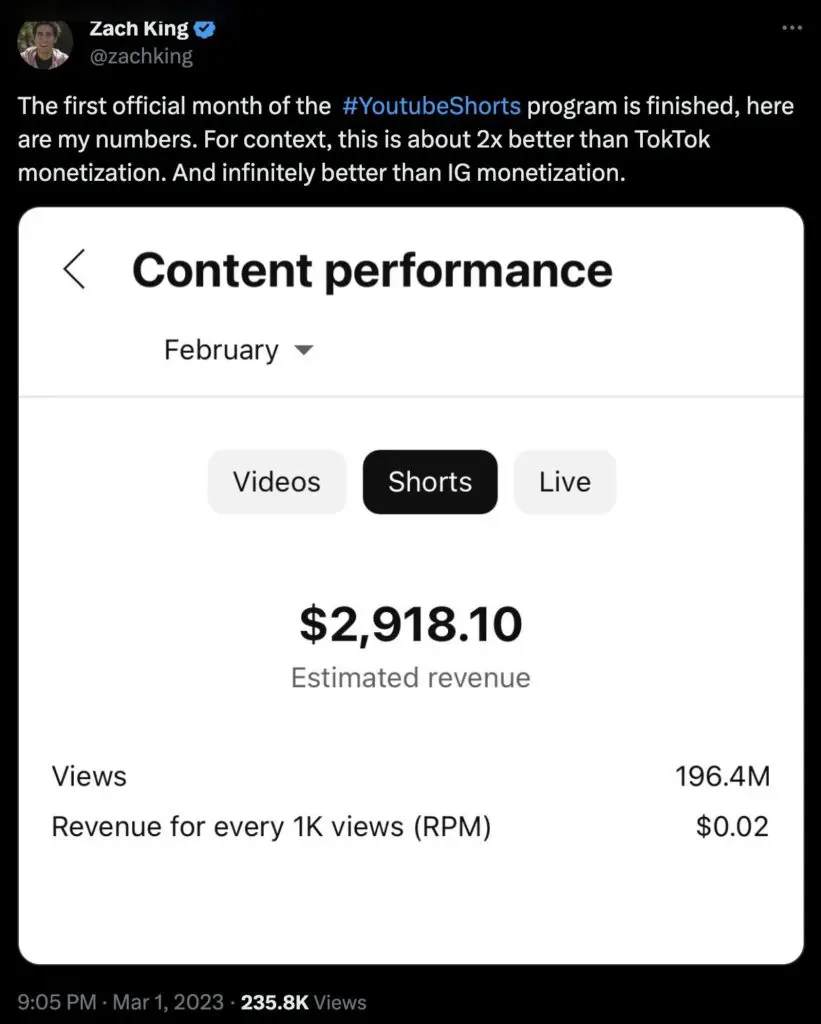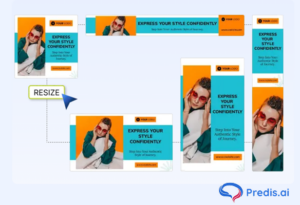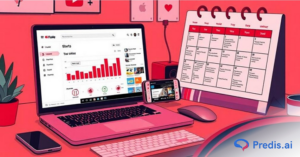If you’re a creator who focuses on creating short-form content, chances are you’ve considered posting your content to YouTube Shorts. While TikTok and Instagram were the first platforms to offer a space for creators to make short-form content, YouTube soon joined the bandwagon, offering its Shorts version on the main menu.
However, as someone who primarily depends on content creation to earn a livelihood, it’s always good to know how much the platform pays its creators. Additionally, knowing how much it pays only makes sense if you understand the criteria behind earning on YouTube.
In this detailed guide, we give you a breakdown of how much YouTube pays for shorts, what incentives they offer, their policies or criteria for paying users, and a whole lot more. Keep reading to find out all these answers.
Is It Possible to Monetize YouTube Shorts?
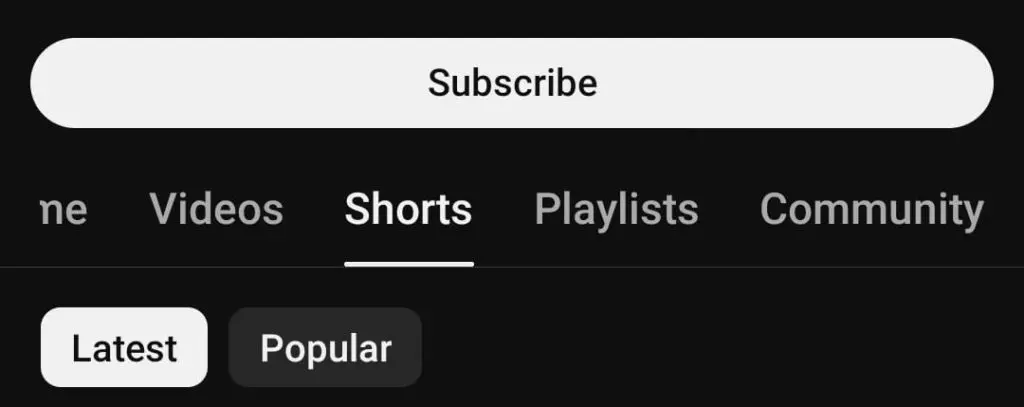
The simple answer to this question is yes. However, creators need to meet certain criteria to be able to monetize the content they make for YouTube Shorts. For starters, they must join YouTube’s Partnership Program (YPP), for which creators must meet one of two key criteria. These include –
- Gain 1000 subscribers and a total of 10 million public Shorts views in the last 90 days.
- Gain 1000 subscribers and 4000 public watch hours for your long-form videos in the last 12 months.
As you can see, the second criterion primarily applies to those creators who have already been creating long-form content for YouTube. Aside from meeting one of the above criteria, you also have to make sure that your content is eligible for this program.
What Criteria Must Your Content Meet For It to Be Eligible for Monetization?
For you to be able to monetize your YouTube Shorts, your content must meet some eligibility criteria, including –
Originality
Your content must be original and not contain clips from other TV shows, movies, or content belonging to other content creators. However, if any such content is sufficiently transformed to result in a marked difference between the two (such as satire or reaction videos), you can meet this criterion.
No Fake Views
Your YouTube Shorts must not have any fake or artificial views.
Advertiser Friendly
They must be compatible with advertiser-friendly content guidelines. These guidelines include avoiding content that may contain foul or inappropriate language, adult content, dangerous acts, and so on.
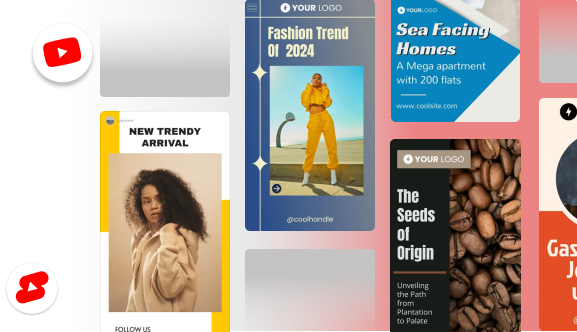
How Much Does YouTube Pay For Shorts Views?
Here comes the big question. How much does YouTube actually pay for Shorts? To understand, it’s crucial that you know how the process of monetizing Shorts works.
- Each month, YouTube puts all its ad revenue in a pool. Part of this money is paid to creators (Creator Pool), while the other is used to cover costs such as music and licensing.
- If a creator uploads a Short with music, for example, the revenue earned is split between the creator and the music’s publishers. On the contrary, if the video is uploaded without any music, the entire share goes to the creator.
- Creators in this pool are paid based on the number of views their videos garner. If a creator’s Shorts account for 1% of total Short views, they then receive 1% of the revenue.
- In terms of the split, 45% goes to the creator, while the rest goes to YouTube. So, for example, if you’re allocated $1000 from the pool, you’ll receive $450, while YouTube will receive $550.
Here’s what this distribution looks like in a diagram created by YouTube itself.
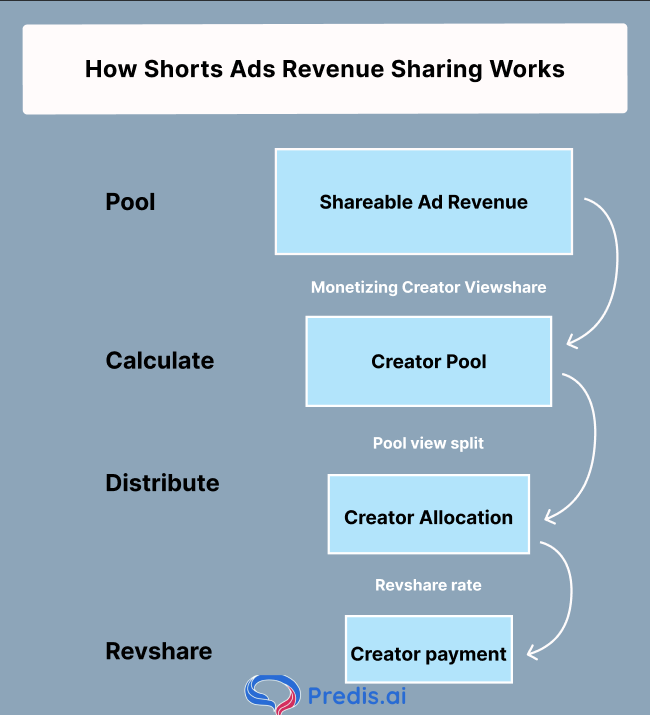
Now, if you haven’t gotten 1000 subscribers, there are still ways in which you can monetize Shorts. These include –
Earning Super Thanks
If you have 500 subscribers, you can earn anywhere from $2 to $50 as Super Thanks as viewers make individual contributions to a video of yours.
Super Chats and Stickers
If you’re someone who does vertical or horizontal live videos, you can collect anywhere from $1 to $500 in monetary donations from your viewers.
Offering Channel Memberships
You can monetize your Shorts by offering your viewers certain member-only perks or badges. With a few added benefits for these members, you can continue posting Shorts and earn from memberships.
In terms of the revenue generated per 1000 views, on the other hand, you can earn anywhere between $0.01 to $0.06. However, this number is far lower than what YouTube pays for the long-form content posted on its platform. The latter, for example, pays anywhere between $1.61 to $29.30 per 1000 views, making it a lot more profitable in comparison.
Examples of Creators Earning Via YouTube Shorts
One of the key examples of creators earning via YouTube’s Shorts is Zach King. On 1 March 2023, King tweeted his earnings from his first month of monetization via YouTube Shorts. As you can see from the image below, the official first month of the Shorts program got him $2,918.10 in estimated revenue, which, as he notes, is better than what he’d have earned via TikTok.
With these numbers, and as shown in the image below, his revenue per 1000 views is $0.02.
Several creators have noted that YouTube’s monetization is far better than that of TikTok and Instagram, offering them and other creators alike a great means of using content creation as their primary occupation or even building it into a side hustle.
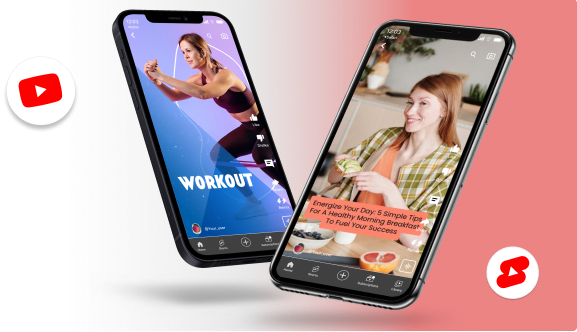
In Conclusion
Monetizing short-form content posted on YouTube Shorts can be challenging, given the number of views and the high barriers to entry to enter YouTube’s Partnership Program in the first place. However, as this guide has shown, there is great potential in posting YouTube Shorts, and combined with long-form content on the platform, you could well use your earnings as your primary source of income or even consider it a side hustle.
However, creating engaging content for social media platforms can be time-consuming. From developing original and engaging captions, captivating thumbnails, and making creatives for cross-channel marketing, the list is endless.
This is where Predis.ai can help. With its intuitive interface, you can AI generate and share videos, generate captions, convert blogs to posts, and a whole lot more. Try it out for free and experience how Predis can help streamline your content creation to help you focus on the strategic aspects of your YouTube channel.



